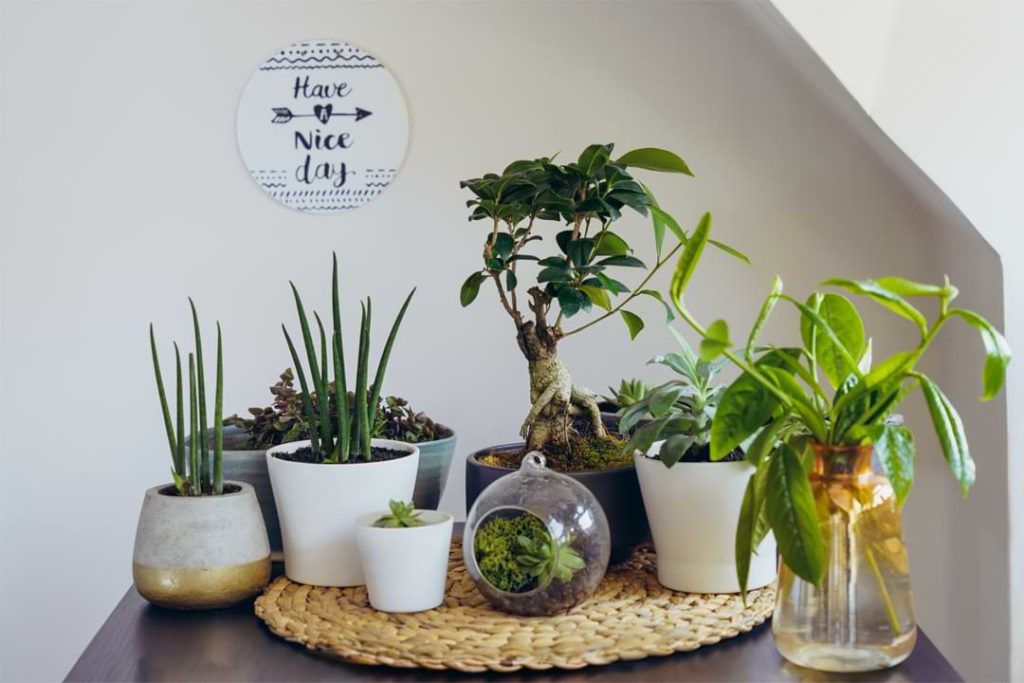One Question, Three Answers. Everything You Need to Know.
Adopting a new hobby can be a lot like learning a new language. Almost every new skill comes with an entire dictionary of different terms you need to know. It can be a little overwhelming!
The art of bonsai is no exception. Many new growers find themselves with a very basic query: “What does bonsai mean?” In this article, we’ll answer three variations of this common beginner’s question.
Question 1: What Does Bonsai Mean?
Bonsai is the ancient Japanese practice of creating miniature meditations on the natural world. But when you’re just starting out, the term can be a little confusing.
You might be wondering:
- Those are the tiny trees you see on bookshelves, right?
- Is a bonsai a particular species of tree?
- What happened to make it grow so small?
These are all common beginner queries. To clear up the confusion, let’s dig into the dictionary!
Definition of Bonsai
Bonsai (n)
- An ornamental tree or shrub grown in a pot and artificially prevented from reaching its normal size.
- The art of growing ornamental, artificially dwarfed trees or shrubs.
Bonsai are trees grown in containers that constrict their roots, preventing them from reaching the size they would in nature. They’re not a particular species of tree; with the right cultivation, nearly any tree or shrub can be grown in bonsai form.
Similar Art Forms
Bonsai technically refers to trees grown and displayed in a specific Japanese style. True bonsai reflects the elements of simplicity, balance, and harmony central to Zen buddhism and the Japanese philosophy of wabi-sabi.
In English, however, the word “bonsai” is frequently used as an umbrella term for several similar art forms. A few practices often grouped as bonsai include:
- Penjing: This is the ancient Chinese art form from which bonsai evolved. Penjing uses dwarfed trees, rocks, and other natural elements to create miniature replicas of the natural world.
- Hòn non bô: Like bonsai, this Vietnamese practice was influenced by penjing. Hòn non bô uses rocks and dwarfed plants to replicate mountain and island scenes.
- Saikei: A newer, Japanese version of penjing, saikei uses extremely small bonsai and other fixtures to decorate its miniaturized landscapes.
- Mai-dăt: This Thai art form uses stylized miniature trees to convey symbolic messages and often plants the tree as part of the landscape rather than in a shallow pot.
How to Pronounce Bonsai
It doesn’t do much good to answer the question “What does bonsai mean?” if you’re still not sure how to say the word. Don’t worry, you’re not alone! There’s frequent confusion surrounding how to pronounce “bonsai.”
Most English dictionaries use the pronunciation “bone·sai” (have a listen here).
As you journey deeper into the world of bonsai, however, you’ll discover several colloquial pronunciations. In fact, you may hear the word pronounced “baan·zai” or “baan·sai” more frequently than its official pronunciation.
While it’s always respectful to learn the proper pronunciation of a word derived from another language, don’t sweat it—you’ll be understood either way.
Question 2: But What Does Bonsai Literally Mean?
While bonsai is practiced the world over, both the word and the practice have their roots in ancient China and Japan. So, lets look at the English translation of the Japanese word.
Bonsai is a Japanese practice that evolved from the 1,000-plus-year-old Chinese practice of penjing. As we mentioned above, penjing uses dwarfed trees and other organic elements to create miniature landscapes that mimic the natural world.
Through years of commerce and diplomatic travel between the two countries, penjing eventually made landfall in Japan. The Japanese adopted the art form as their own by adding (or rather, removing) elements of simplicity in reverence to Zen Buddhism.
The name of this new art form? 盆栽
In bonsai, the dwarf tree completely dominates the landscape. Additional elements commonly found in penjing, like rocks and other small plants, are not frequently included in the design.
What Does It Mean in Japanese?
The word “bonsai” can be translated to English by interpreting the two kanji, or symbols, used to create the Japanese word. The left kanji “bon” (盆) means “basin” or “tray,” while the right kanji “sai” (裁) means “planting”; so it literally translates to “planted in a basin” or “planted in a shallow container.”
Question 3: Okay, But What Does Bonsai Mean Spiritually?
The practice of bonsai is more than the mere application of horticultural methods. It is meant to inspire contemplation of the natural world. It is a practice of looking toward the future and making intentional decisions to create a tree that communicates elements of simplicity, balance, and harmony in its design.
Simplicity
Through careful, intentional cultivation, a bonsai grower can create a tree that stops you in your tracks—no bells or whistles. Bonsai removes the secondary elements found in penjing as a means of giving full focus to the tree itself. Meditating on the element of simplicity in bonsai is an important practice, as it is very much a contrast to our loud and busy modern world.
Balance
A key part of bonsai is creating a tree that conveys balance, whether physical or a visual illusion. The shape of roots, trees, and branches are painstakingly cultivated to create a feeling of equal weight throughout the design. A successful design invokes reverence for equilibrium in life, as elements of the tree (and ourselves) often rely on perfect balance to stay upright.
Harmony
The final spiritual meaning is found through harmonious design. This often centers around achieving the perfect balance between masculine and feminine elements. Containers, pruning decisions, and wiring techniques are all selected to create a tree that is harmonious to look at. The calming, captivating effect of a harmonious tree allows viewers and growers alike to access and understand these feelings in their own lives.
What have you learned along the way? Share in our Facebook group.
Bonsai With Us!
The Bonsai Resource Center is here to help you learn the best bonsai tree care and provide you with the tools you need to keep your tree healthy and strong. Explore our other articles, visit our online shop, and connect with other bonsai lovers in our Facebook group to learn everything you need to know about this rewarding hobby!
More Resources
The Ultimate Bonsai Plant FAQ Cheat Sheet
How to Grow Bonsai: The Ultimate Reading List



